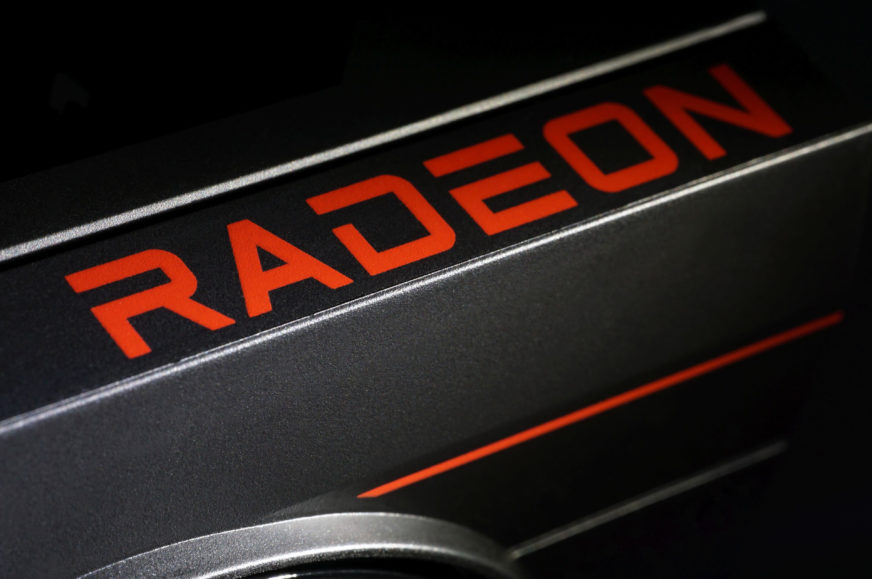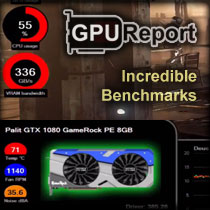AMD introduces Fluid Motion Frames 2
It’s been almost a year since the release of AMD Fluid Motion Frames (AFMF) for Radeon GPU users, which is an alternative solution to generating interpolated frames as provided by DLSS 3 or FSR 3, but for games that don’t offer those features. In fact, AFMF works at the driver level and generates frames without any game integration. A second improved version of AFMF 2 is now out with higher quality and better compatibility.
AFMF 2, or AMD Fluid Motion Frames 2, is again part of the HYPR-RX feature that combines various frame rate boosting tricks in games, but it will also be possible to activate it separately. It’s done via AMD Software, of course. Because it’s a GPU driver feature, it’s not available to owners of other graphics cards (which is the case with FSR 3, which is integrated into games themselves).
Read more: AMD is preparing a version of FSR 3 frame generation that works in all games
This new version combines several different improvements. AFMF 2 is now finally compatible with borderless fullscreen mode, and it is also now possible to use this feature in conjunction with Radeon Chill (which reduces GPU power consumption during gameplay), something that should come in handy on laptops. In combination with Radeon Chill, the drivers will lock the game’s maximum FPS to half the monitor’s frame rate (and AFMF 2 will then increase it to the full frame rate by interpolation). In addition to DirectX games, AFMF 2 is now also supported in games running on top of the Vulkan and OpenGL APIs.
Better quality and setup options
The new AFMF version 2 also adds new options for quality and performance settings. You can select Performance Mode, from either Quality or Performance options. The former has better image quality and is recommended for Radeon discrete graphics cards (the auto option sets it automatically for them). The simpler Performance mode is less performance intensive and is intended for integrated GPUs (the auto option sets it automatically on such systems).

In addition, Search Mode can also be selected to improve smoothness when interpolating (generating) frames. The way AFMF works is that if the game contains very fast or chaotic movement, the frame generation is temporarily disabled (so that the FPS returns to its native value) to avoid visible errors in the frame.
AFMF is supposed to have improved handling of motion, and the High mode results in the no-generation fallback being used less often, so that the generation of interpolated frames is active amore often in such fast moving scenes. In contrast, Standard mode is more conservative and turns generation off more often. According to AMD, High mode is more suitable for higher resolutions (1440p and above), while Standard is recommended for 1080p (the auto setting toggles this option on resolution exactly as recommended based).

AFMF 2 is supposed to have better image quality in general (both in High and Standard mode), and it’s supposedly improved by some AI techniques as well. However, these AI tools were apparently used for development alone as help for developping a better algorithm (there is not AI inference done in real time when using AFMF 2). According to AMD, the image quality should be better in all AFMF 2 modes when compared to the previous version of AFMF.
Improved latency
Also, AFMF 2 is supposed to improve latency, i.e. the extra delay added to the game’s response due to interpolation (this is unavoidable and is inherent to how interpolation works; the increased latency happens with both AFMF and FSR 3 as well as Nvidia’s DLSS 3 frame generation). According to AMD, AFMF 2 generally has lower added latency, i.e. across all modes, resolutions and quality settings (and on all graphics cards).
In conjunction with the Anti-Lag feature, for example, latency is expected to drop by 12% when playing Counter-Strike 2 on the integrated Ryzen 7 8700G GPU, or by up to 28% in Cyberpunk 2077 when gaming on the Radeon RX 7900 XTX (with 4K resolution and Ultra ray tracing settings).

For Radeon RX 6000 as well
AFMF has already added support for RDNA 2 graphics cards as well as Radeon RX 7000 cards, and this support is retained. AFMF 2 is supported by the Radeon RX 7000 and Radeon RX 6000 generations of discrete graphics cards (however, AFMF 2 is not yet compatible with borderless fullscreen mode o RX 6000 GPUs).
It can also be used on integrated GPUs in Ryzen processors, but only on those with RDNA 3 architecture, which means mobile Ryzen processors with Zen 4 architecture (Ryzen 7040 and Ryzen 8040/8045, and also the related Ryzen Z1 and Z1 Extreme handheld SoCs) and also Ryzen 8000G desktop CPUs.
The AFMF 2 feature is released as a beta for now and is available in a special preview driver that you can download from the AMD website linked below. More of these preview driver versions may be released before AFMF 2 makes it into the standard generally distributed drivers for Radeon graphics cards. However, AMD has said that the feature should also be added to the mainline drivers during the fourth quarter of the current year.
Sources: Preview driver for AFMF 2, AMD article
English translation and edit by Jozef Dudáš
⠀











